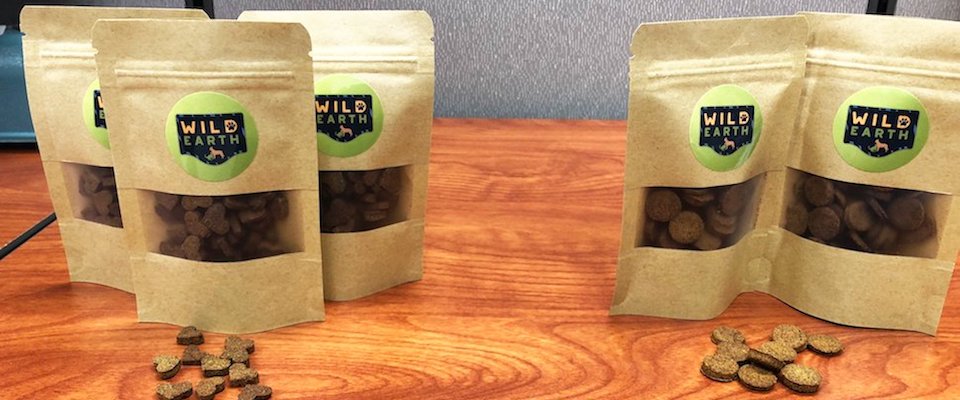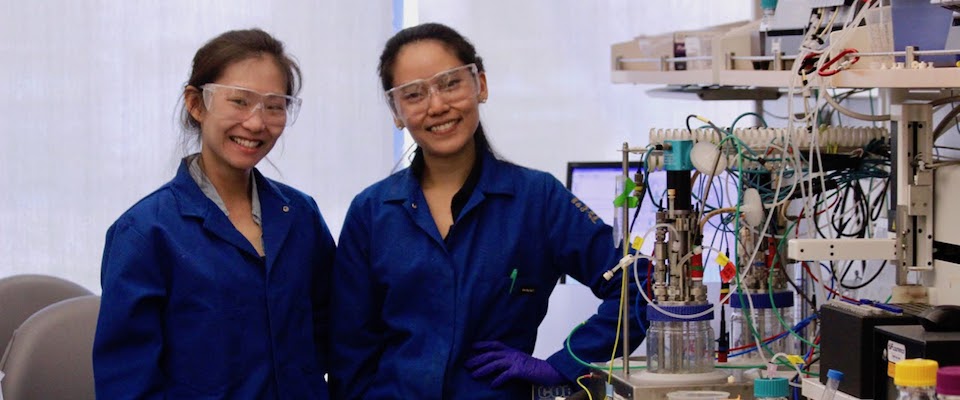It’s a cruel world, but a new Berkeley start-up aims to make it just bit kinder and gentler. Wild Earth, a company spearheaded by biohacking wunderkind Ryan Bethencourt, is working up a line of fungus-based pet foods. It’s the kind of venture that, at first whiff, lends itself to some Anthony Bourdain like lampooning: It’s not enough that you don’t want to eat anything with a face. You don’t want your dog to do any face-eating either.
But Wild Earth isn’t about holier-than-thou veganism, insists Bethencourt. Standard pet foods, he says, are innately unhealthy, both for pets and the planet.
“Pet food accounts for between 25 to 30 percent of the environmental impact of the meat industry,” Bethencourt says. “We want to change that.”
Certainly, there is some research to back up that thesis. According to Food and Drug Administration compliance policies, pet foods can incorporate meat from animals that may “…have died otherwise than by slaughter…” e.g., disease or injury. This regulatory loophole, claims Bethencourt, allows pet food producers to employ meat from animals with tumors or infectious diseases. Moreover, says Bethencourt, meat used for pet food is sometimes contaminated with E. coli and salmonella—a claim confirmed in a 2014 study published in the journal Foodborne Pathogens and Disease. (That research found the risk was particularly high for raw and jerky-style pet food products.)
And in a potential Soylent Green twist, the FDA noted earlier this year that some pet foods have tested positive for pentobarbital, a euthanasia drug commonly used on cats, dogs and sometimes horses. Most likely, the barbiturate came from equines that were put down, but even the faintest possibility that “dogs might be fed dogs,” says Bethencourt, has people up in arms.
Not surprisingly, the pet food industry doesn’t see things the same way. Mary Emma Young, a spokesperson for the Pet Food Institute, maintains all pet food feedstocks are strictly regulated and prevent waste.
“The animal-derived ingredients used in pet food are often parts of food-producing animals that Americans choose not to eat but are still safe and filled with nutrients,” Young emailed in response to a query from California. “When using these animal-derived ingredients, pet food makers are able to prevent nutritious animal products from otherwise going to waste, avoid competition with the human food supply, and contribute to the sustainability of U.S. agriculture.”
Still, meat production—including the meat used for pet foods—indubitably has profound environmental downsides. Study after study—including a 2016 report from the U.N.’s Natural Resource Panel—confirms that meat production accounts for about one-third of anthropogenic greenhouse emissions, degrades water availability and quality and contributes to soil erosion on a massive scale.

“American pets—not people, just pets—rank fifth in terms of global meat consumption,” Bethencourt says, “and pet food accounts for between 25 to 30 percent of the environmental impact of the meat industry. The system we’ve developed for feeding our pets isn’t healthy or sustainable, and we want to change that.”
Bethencourt thinks he has just the product for doing so.
Long a force in Bay Area bioengineering circles, Bethencourt was a founder of Berkeley Biolabs, a DIY biohacking space, and co-founded the biotechnology accelerator IndieBio. There, he and co-founder and chief science officer Ron Shigeta helped scores of biotech companies secure funding for everything from mushroom “leather” and in vitro meat to universal antivenoms, virus-based sensors to detect airborne chemicals and biochips that combine human neurons with electronic components. Funding other enterprises was rewarding but something was missing, says Bethencourt.
“We wanted to do what we were helping other people do,” Bethencourt says. “We wanted to experience that ride.”
Alt pet food seemed like a logical choice, says Bethencourt, given the aforementioned issues. But they needed a feedstock: if not industrial meat, what? Certainly, there are plant-based pet foods out there, but it’s a challenge to make them nutritionally adequate. Carnivores need a variety of amino acids—the building blocks of protein—to thrive. Grains and soybeans can’t supply all of them.
“Grain-based pet foods need a lot of supplements,” says Shigeta. We wanted a feedstock that already had most of the necessary amino acids so it would require only minimal adjustment.”
“We didn’t reveal the fact that it wasn’t meat-based, that it was made from koji—just that it was pet food….Eighty percent of our subjects said they would buy it.”
Shigeta found the answer in his basement: Koji, or Aspergillus oryzae, as it’s technically known. Koji is a mold-like fungus that can be cultivated on various substrates, including rice, soybeans and potatoes, and has been used in Asia for millennia to produce soy sauce, miso, alcoholic beverages and vinegar. It is replete with amino acids and has a rich umami aroma and taste.
“I’ve cultivated it for a long time for own-home food projects,” Shigeta says. “We do it just because we love the taste—but it’s also highly nutritious. It’s eaten regularly by more than a billion people, and it’s considered a probiotic.”
It can also be produced quickly and cheaply in multi-ton lots in bioreactors using simple cane sugar as the growing medium.
“It produces these big cakes that kind of look like tuna casserole,” Shigeta says.
While cat food may come later, Wild Earth is focusing on dog food for now, says Florian Radke, the company’s chief marketing officer. The team has conducted extensive research on canine microbiomes to ensure against the allergic reactions that are sometimes associated with meat feedstocks. Clinical trials are being conducted to confirm that koji-based pet food is in fact digestible by dogs, and surveys of pet owners have already found broad acceptability of the products, Bethencourt says.
Will people eschew meat-based pet foods for the good of the planet, or even their pets? Radke insists they will.
“We didn’t reveal the fact that it wasn’t meat-based, that it was made from koji—just that it was pet food,” Bethencourt says. “Eighty percent of our subjects said they would buy it.”
The company is preparing for the release of several products. First up: doggy snacks, small, brown lozenges that have a nutty, appealing aroma.
Of course, it remains to be seen whether the new-fangled Scooby Snacks can compete with old-fashioned Milk Bones. Will pet owners really wean their furry companions off meat for the good of the planet? Radke insists they will, and the company plans to produce products by “the tens of tons” to meet the anticipated demand. Koji-based kibble and snacks, insists Radke, are the right products at the right time, and could well claim a big chunk of the $30 billion pet food market.
“Education will be part of the process, but when you open people’s eyes to the basic health and environmental problems [of meat-based pet food], we’re finding they want a solution,” says Radke. “Dogs and cats crave protein, but that’s not the same as craving meat. We’re providing better protein—and it’s protein without the cow in the middle.”




















